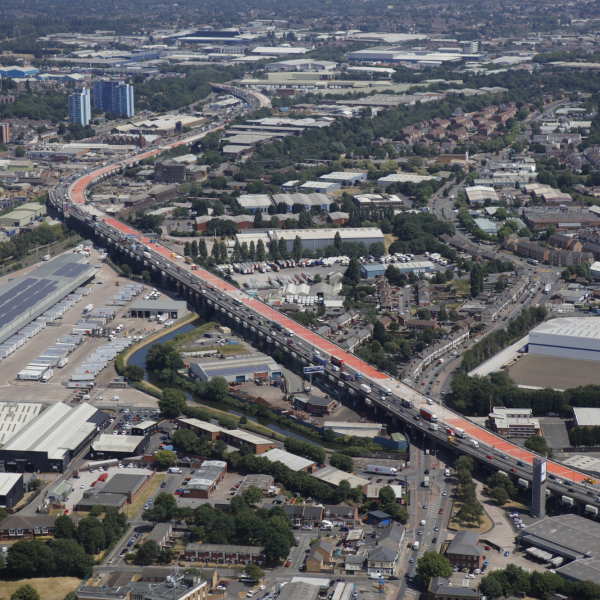M1 River Trent Viaduct
Following 12 months of early contractor involvement as part of the Area 7 framework for National Highways, VolkerLaser was awarded vital column strengthening works to the River Trent Viaduct on the M1.
What we did
The M1, Britain’s first full length motorway, opened in 1959, allowing drivers to travel from London to Leeds. Midway along its 193 mile trajectory, the M1 is carried over the River Trent floodplain by a concrete viaduct. Built in 1964 and accommodating more than half a century’s worth of commuters, the structural integrity of the viaduct required strengthening.
We began works on the project by carrying out extensive earthworks and watercourse diversions to establish safe access to the existing columns and associated foundation bases. This included necessary temporary works designs and ground-water control and filtration.
We prepared the 136 exposed concrete surfaces for repair, high pressured water jets were employed in the hydrodemolition of delaminated areas of concrete to an aggregate finish. To enhance the structural integrity of the column foundations, new starter reinforcement bars were resin fixed to the existing bases integrally. The subsequent process of in-situ dry sprayed concrete repair constructed reinforced foundation bases of superior diameter.
New shear reinforcement bars were fixed into the existing concrete columns, which were then re-profiled with custom made modular steel column shutters, acting as a mould in readiness for further in-situ concrete casting. Manufactured by Form-Fab Ltd, the innovative concept was devised by our expert team. The modular system allowed the shutters to be fixed together in varying combinations to cover the vast range of column lengths required. This eliminated the expense in manufacturing tailored shutters for each individual column, providing the client with a value engineered solution, bringing the project well within budget.
With the work area prone to serious flooding of up to two metres in depth, we needed to remain in regular contact with the Environment Agency, monitoring heavy rainfall and flood warnings. Emergency evacuation procedures and contingency plans were required, as well as the need to keep the quantity of plant equipment on site to a minimum due to ground weight capacity.
"This was an interesting but challenging scheme carried out within the River Trent floodplain. Our site team demonstrated excellent planning, innovation and risk management to deliver a first-class job on time and within budget for National Highways.”


